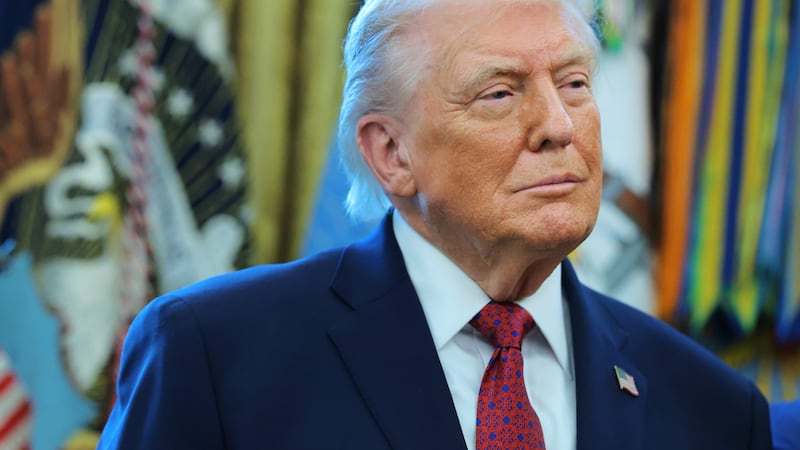It’s hard to know where the State’s trade with the US will land once the tariff impact has been digested. There’s a lag effect to these levies combined with an uncertainty as to who will ultimately bear the cost.
Trump and his Maga operatives are acting as if the burden falls totally outside the US and are boasting about the billions of dollars the US exchequer is likely to garner. But precedent suggests the tariff hit tends to fall on importing firms and ultimately domestic consumers.
That’s why everyone is looking at the US economy for signs of a slowdown.
In the interim, we’ve got volatile trade numbers. The latest figures from the Central Statistics Office (CSO) show the value of exports from Ireland to the US fell by whopping 60 per cent between May and June, dropping from €10.8 billion to €4.4 billion.
READ MORE
The headline June figure was also down by a quarter on the same month last year.
Most of this merely reflects a levelling of the surge seen in the earlier part of the year when firms rushed to stockpile goods in the US in advance of Trump’s Liberation Day tariff announcement on April 2nd.
The trade will presumably find its level once all this settles down. The European Union and the Government will be hoping for a manageable decline.
From Ireland’s perspective, the 15 per cent tariff on pharma, the main element of the State’s export trade with the US, represents damage but controlled damage in the context of the US’s retreat from free trade.
Pharma firms here make big profits, big enough to absorb the hit without uprooting themselves. These companies work around 10-year cycles of investment and are therefore unlikely to jump ship on the whim of one of Trump’s policy announcements.
The biggest buyer of pharma is state healthcare and therefore much of the trade is inelastic, less sensitive to price changes.
That’s probably why Trump, in parallel to tariffs, is demanding these firms reduce their prices in the US.
His threat to hike tariffs on EU pharma imports up to 250 per cent within a few years flies in the face of the EU-US trade deal and any notion of certainty it might signify. But that’s the world we’re in at the moment and why the CSO and other data points are so volatile.

















